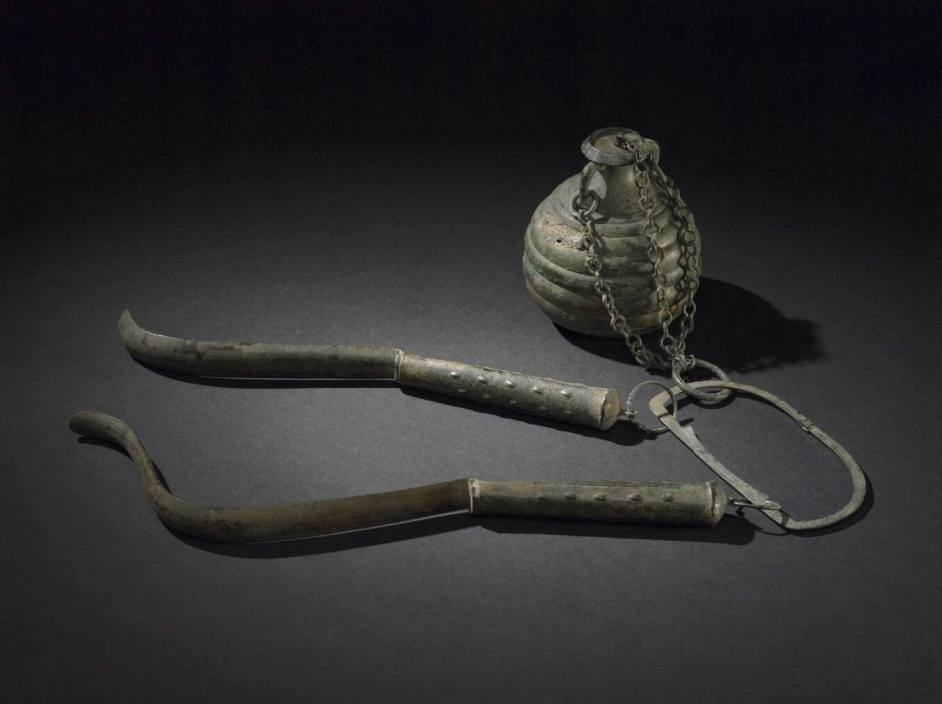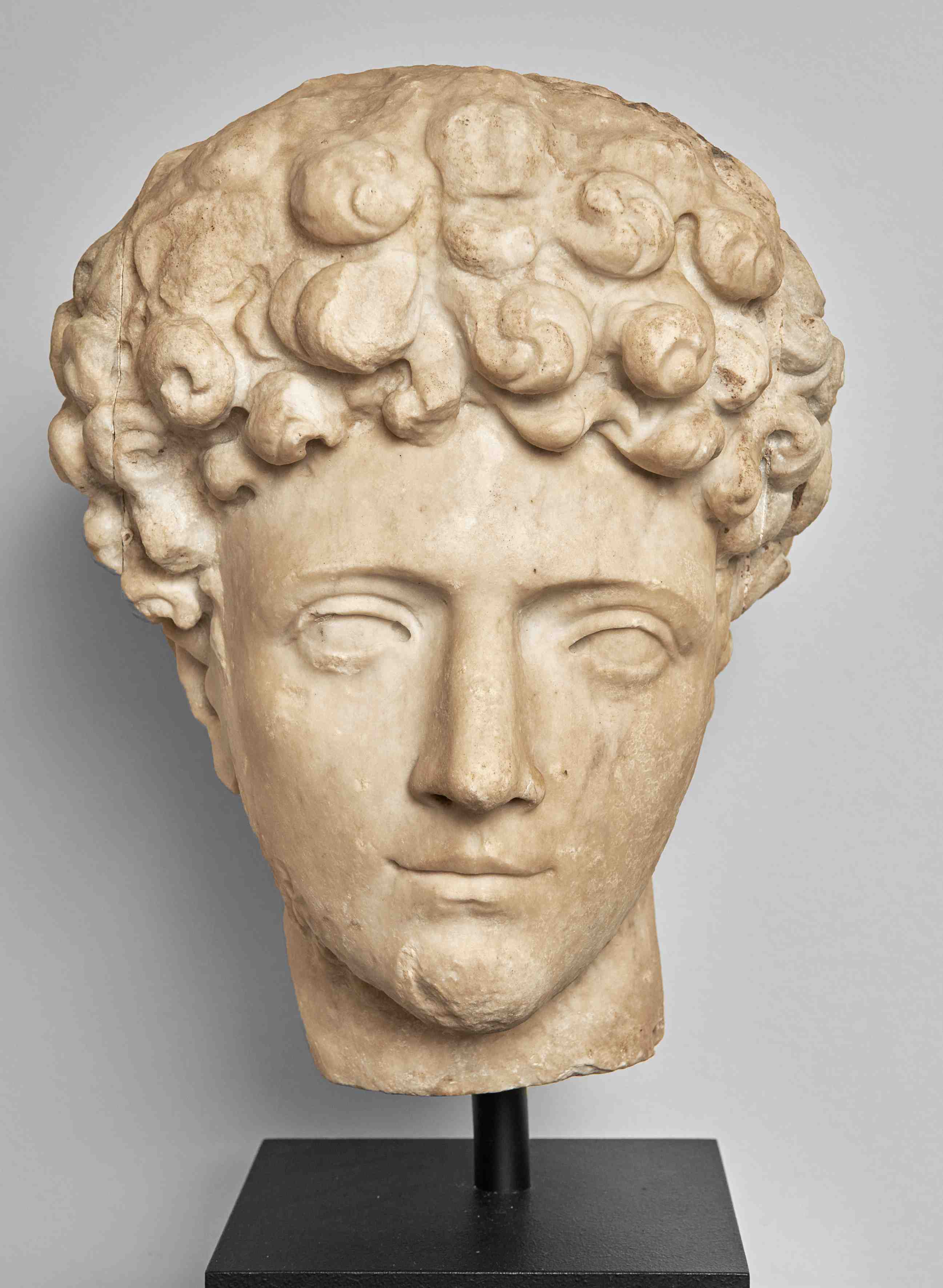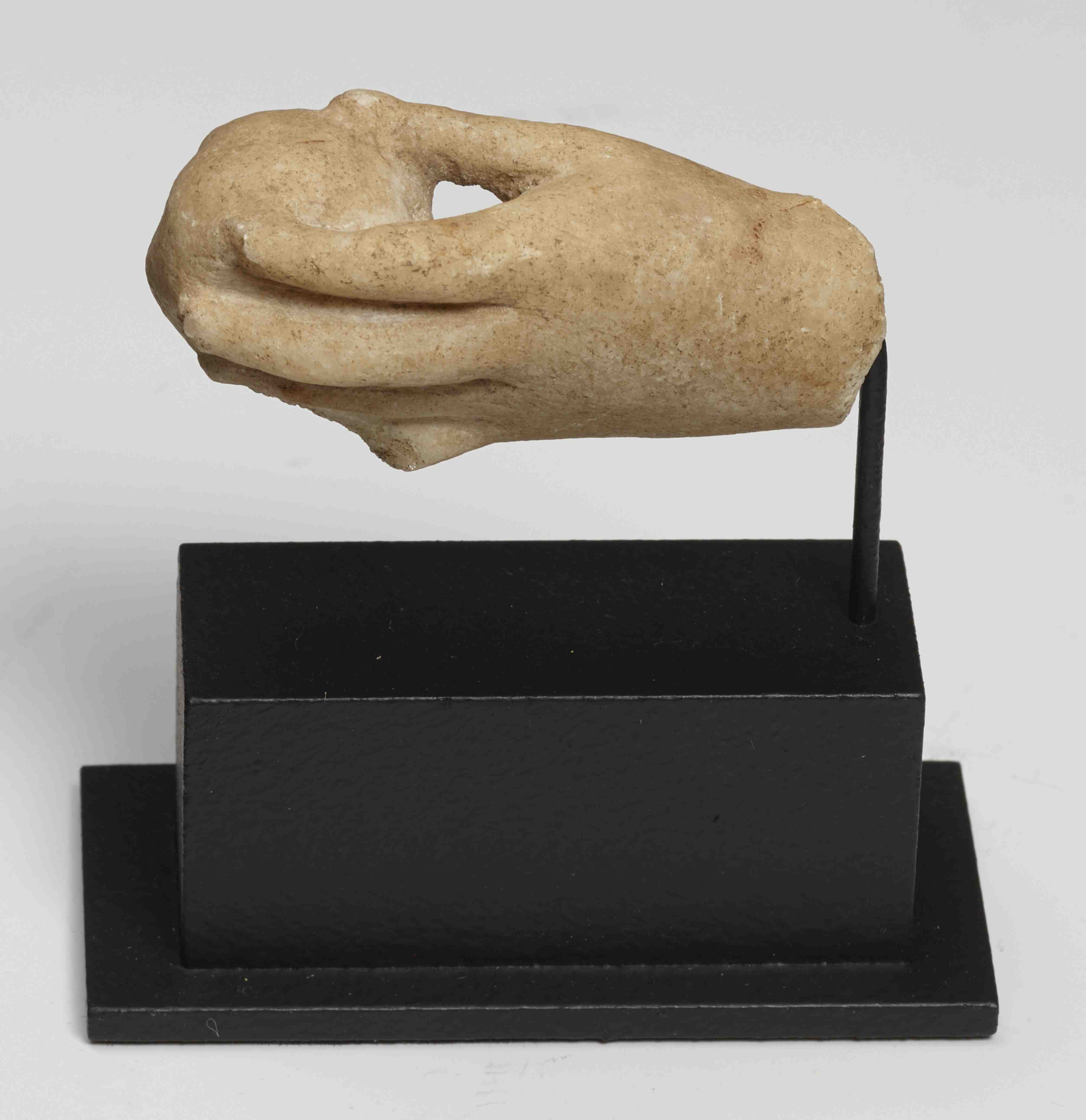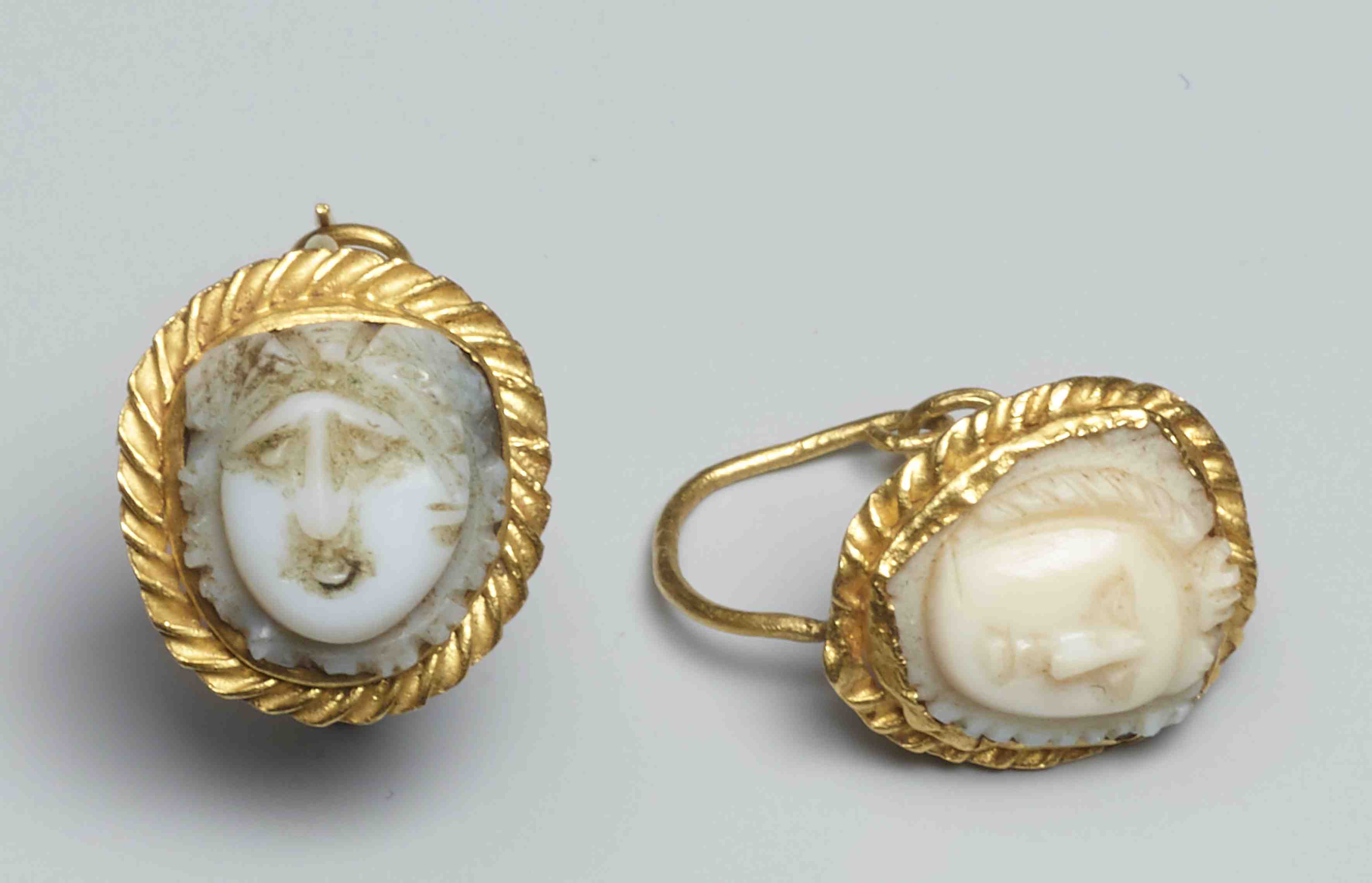The set is composed of a large bronze and lead aryballos, consisting of two hemispherical bowls which are soldered together, as well as two strigils. Two bronze chains, hanging from a curved bronze handle, support the large spherical aryballos, which in turn supports a bronze chain with the two strigils. The strigils are suspended from a large circular bronze ring with their hollow rectangular handles. The aryballos, which has a short neck and flaring mouth, sits on a thin discoidal foot and is incised with a pentagonal design of 12-panels, perhaps reminding the modern viewer of the famous Adidas Telstar football introduced in 1968.
Note
The aryballos and strigil helped maintain the hygiene of an athlete, before and after training or competing. In Ancient Greece, the Olympic games were held in summer at the hottest time of the year, and this small flask contained olive oil with which the athlete would have coated his body before exercising in order to prevent dehydration, as well as dirt entering the pores of the skin. In Antiquity, the athletes trained and competed naked in the blazing sun and so the olive oil massage would have helped to relax the muscles, as well as maintain hygiene.
After the contest, the athlete scraped off the dirt and sweat trapped in the oil with the scythe-shaped strigil. The basic shape of the strigil remained unmodified during Antiquity. As this fantastic, exemplary toilet set demonstrates, the aryballos and the strigils were usually found together in a set. A sponge with which the athlete washed himself after scraping of dirt with the strigil would have belonged to such a set too, and it would have been worn on the wrist or arm of the athlete or his servant. The chain allowed the set to be suspended everywhere on the sports field. After washing, the athlete coated his body with odourant perfume oil. The closest parallel to this piece is found at the British Museum (1868,0105.46).












